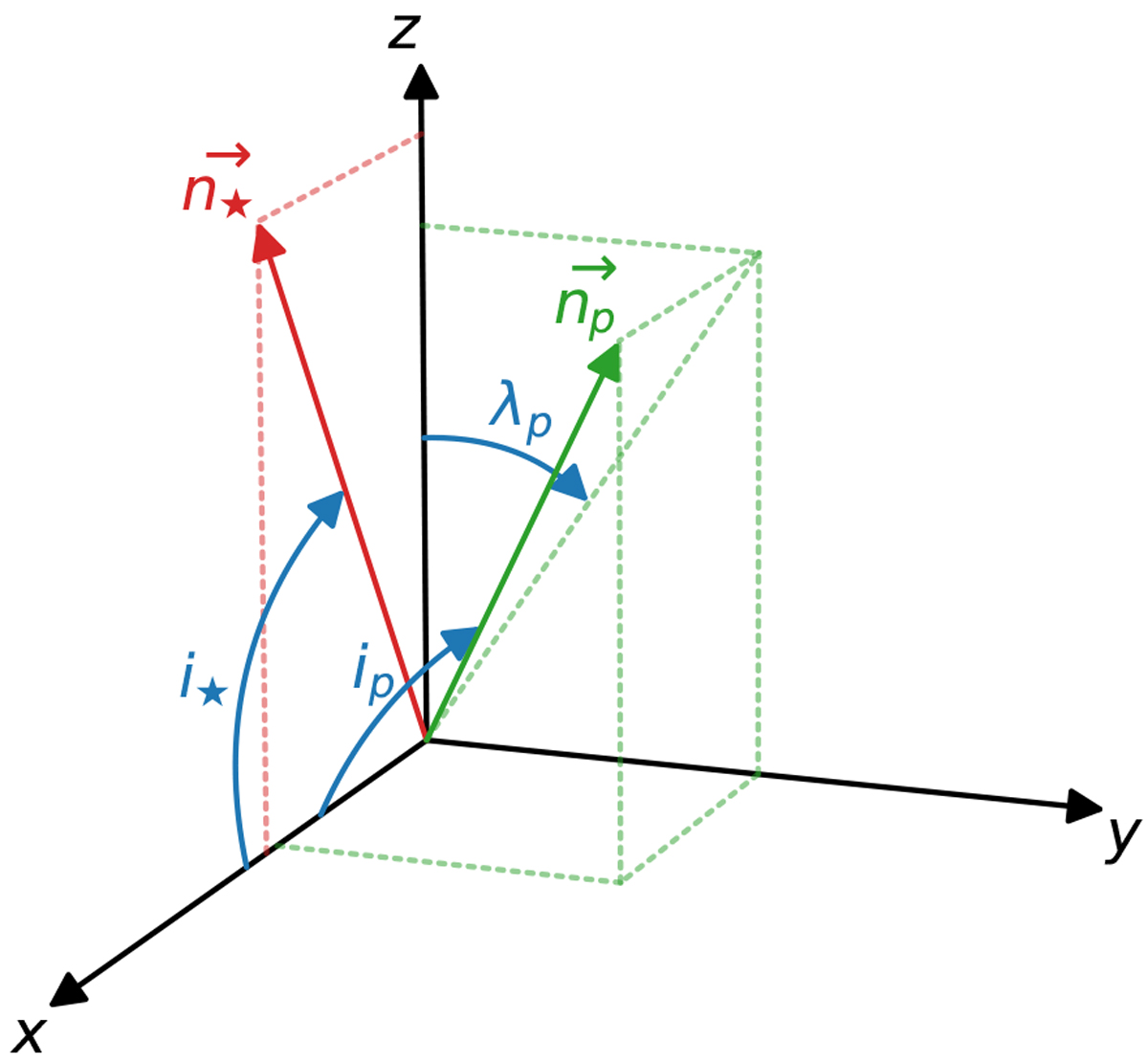Fig. B.1

Download original image
Geometry used to define the angular parameters of the GD model. The x-axis points towards the observer. The z-axis is defined so that the stellar spin axis ![]() is contained in the (x, z)-plane and its projection onto the plane of the sky is always along z ≥ 0. The y-axis completes the orthonormal basis. The orientation of the planetary orbit is defined by the orbital angular momentum unit vector
is contained in the (x, z)-plane and its projection onto the plane of the sky is always along z ≥ 0. The y-axis completes the orthonormal basis. The orientation of the planetary orbit is defined by the orbital angular momentum unit vector ![]() that points perpendicularly to the orbital plane. The stellar inclination i⋆ is the an- gle between the x-axis and the stellar spin axis
that points perpendicularly to the orbital plane. The stellar inclination i⋆ is the an- gle between the x-axis and the stellar spin axis ![]() . The inclination of the planetary orbit ip is the angle between the x-axis and the orbital angular momentum unit vector
. The inclination of the planetary orbit ip is the angle between the x-axis and the orbital angular momentum unit vector ![]() . The projected orbital obliquity λp is the angle between the z-axis and the projection of
. The projected orbital obliquity λp is the angle between the z-axis and the projection of ![]() onto the (y, z)-plane. Following the convention used in this work, the vector
onto the (y, z)-plane. Following the convention used in this work, the vector ![]() is always lo- cated in the half space where z ≥ 0, and we have λp > 0 when
is always lo- cated in the half space where z ≥ 0, and we have λp > 0 when ![]() is in the half space where y < 0. Thus, the example displayed in the figure has i⋆ > 0, ip > 0 and λp < 0. The expression of the true orbital obliquity Ψp is obtained from the dot product of the two unit vectors:
is in the half space where y < 0. Thus, the example displayed in the figure has i⋆ > 0, ip > 0 and λp < 0. The expression of the true orbital obliquity Ψp is obtained from the dot product of the two unit vectors: ![]() .
.
Current usage metrics show cumulative count of Article Views (full-text article views including HTML views, PDF and ePub downloads, according to the available data) and Abstracts Views on Vision4Press platform.
Data correspond to usage on the plateform after 2015. The current usage metrics is available 48-96 hours after online publication and is updated daily on week days.
Initial download of the metrics may take a while.


